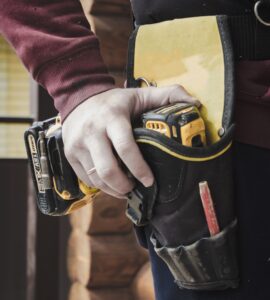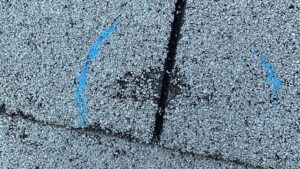Minnesota is no stranger to freezing temperatures and heavy snows. A heavy snow may be annoying because you have to shovel it off your driveway to get out of your home, but it can also create a significant concern with the overall longevity of your roof, too. Most often, when it snows, we don’t think much about the roof at all, assuming it will just melt away. Yet, snow can be very heavy, and the heavier it is, the more likely it is to cause a significant amount of damage.
Is Your Roof Well Insulated?
If you have a newer roof, one that is well insulated and in good overall repair, the snow load is not as much of a concern in most areas. On the other hand, if your roof is older, perhaps has a few missing shingles, or is not insulated at all, then you have a concern that could lead to a disastrous cave in of the structure.
How do you know what to do? Before the snow starts flying for the winter, it may be time to think about your home’s roof.
What Does Snow Load Mean?
Snow load is a term you’ll hear discussed when it comes to roofing structures. It is the downward force on the roof caused by the weight of the snow and any ice on it. The higher the snow load, the more weight the roof has to support. If the snow load is too high, that can cause the structure to fail outright, causing the roof to collapse within itself. Sometimes the snow load is less than what you anticipate, especially if the structure is not built properly or there are concerns with the materials on the roof.
Another key risk is in blowing snow. As the snow blows around, it creates drifts, areas where the snow load in one area may be much higher than in others. This creates an unbalanced load, which can also create a risk for the roof to suffer damage.
Determining How Much Snow Is Too Much Snow
Even if you love the fluffy white stuff outside of the window on a cold winter day to look at, there are times when you need to think about getting it off your roof. To be clear, it’s never wise or safe for you to remove snow from your roof on your own, especially without the right equipment.
To determine what’s occurring, you need to consider the snow itself. Not all snow is the same, after all.
Moisture content of the snow on your roof
Some snow is drier and lighter than others. If the snow is moisture-laden, then it is going to be much heavier overall than lighter snow. The range of moisture can be as much as 5 to 32 percent. In this situation, a cubic foot of soft, light snow could weigh about 3 pounds. However, wet snow can weigh as much as 21 pounds.
How much snow has accumulated on your roof?
Another factor that impacts snow load is just how much snow is on the roof. That is an estimate of all of the snow on the roof, even the snow that fell last week that has yet to melt. The more inches added to it, the higher the risk of a problem occurring.
Snow distribution
Yet another factor is where the snow is on the roof. Is it even and uniform from front to back? Chances are good there are areas where it is deeper than others, such as flatter portions of the roof rather than the peaks. Again, this is often brought on by wind drifting the snow into various areas like the dormers and roof valleys.
What Should You Do About Snow on Your Roof?
There are a few things to keep in mind when it comes to snow load and your roof in general.
Have an roof inspection
If there is any question about the stability of the roof, your first and primary step needs to be to have an inspection of your roof prior to the start of the winter months. Even if it is the middle of winter, having a roof inspection could be vital to ensuring your home remains safe to live in.
Make repairs to strengthen the roof
If there is substantial damage to the roof or the structure under the roof, then have those repaired. Even small leaks can weaken the overall integrity of the roof, creating a risk of it collapsing in on itself. Don’t put off repairs that need to happen, as it will worsen over time. If there is not time for a full repair or replacement right now, your roofing contractor may be able to take steps to shore up the roof to minimize risks until there is time to get the repairs underway.
Removing snow from the roof
If you have a lot of snow on your roof right now, don’t put yourself at risk. Never climb on the roof or put a ladder up to your gutters if you have snow on the roof. Even if you think it would be best to shovel it off, doing so puts you at a high risk.
It may be possible to have a roofing contractor or another professional come to the home to remove the snow for you. This may be necessary if you have a substantial amount of snow on your roof and there’s more coming.
Another option would be to use a snow rake, a rake that’s designed specifically for this purpose. It can help you to encourage snow to come off the edge of your home while you remain on the ground and far out of the way of it falling. If you do this, be sure to follow the recommendations by the manufacturer to ensure you stay safe and never use it while on a ladder.
Snow is a big deal and can be a significant problem for many property owners. Yet, if you take a few minutes now to make sure your roof is in good condition, chances are good you’ll be able to minimize any risk to your home this winter.





